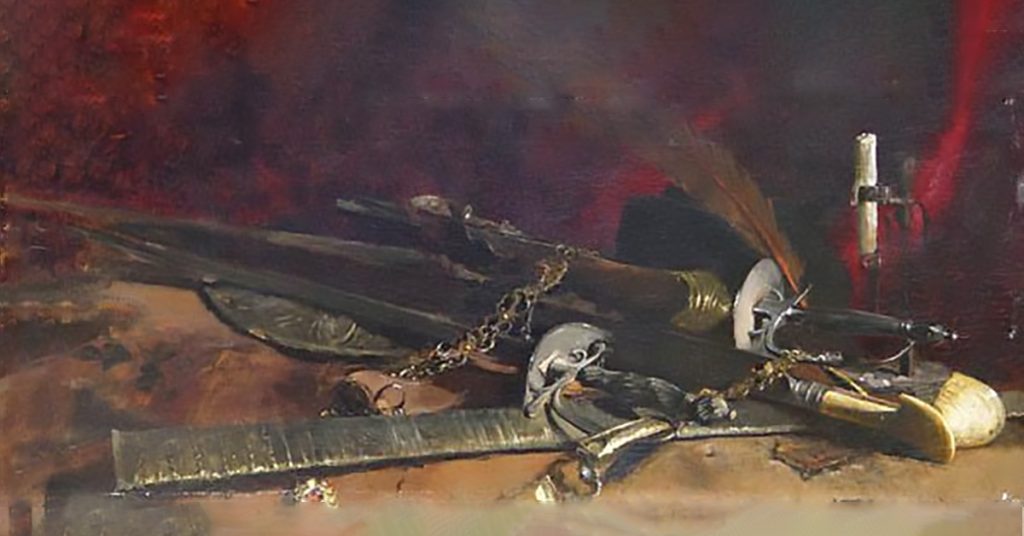Back to Melee Weapon Search
Sword, Frankish
Sword, Blade, Sidearm, Migration Era, German, Norse, Latin Europe
The term "Frankish Sword" isn't really historical for this weapon, which is often known as a "Viking Sword" and is known to have proliferated throughout Europe during the Viking Age. It is defined here as the strait, double-edged cutting and slashing swords which replaced the spatha in northern Europe between the 7th and 11th Century AD. We call it the Frankish sword because so many of these seem to have originated in Frankish controlled areas such as the region around what is now Solingen, Germany. First appearing in the late Migration period among the Franks and the Norse tribes, this development of the spatha is better balanced and arguably more specialized for cutting. It saw continuous use by Germanic and Norse peoples through the end of the Viking Age (from the end of the 7th through the 11th -12th century), and also spread to Ireland, the British Isles, Russia, the Baltic States, Poland, Bohemia, Spain, France, Italy, and parts of the Middle East and Central Asia.
For game purposes, a Frankish sword is a single handed cutting sword with a small hand grip, heavy iron (as opposed to wood or bone) pommel, and broad, deeply fullered blade with a rounded or spatulate point.
 A sword (“Frankish” sword) excavated from a grave in Norway, 9th Century.
A sword (“Frankish” sword) excavated from a grave in Norway, 9th Century.  Norse sword, from a bog site, Hebrides Islands, 10th Century
Norse sword, from a bog site, Hebrides Islands, 10th Century  A Frankish sword with a silver hilt, currently held by the Metropolitan Museum of Art, 10th Century, found in the Netherlands near Groningen. The blade is somewhat damaged by corrosion. This would be
A Frankish sword with a silver hilt, currently held by the Metropolitan Museum of Art, 10th Century, found in the Netherlands near Groningen. The blade is somewhat damaged by corrosion. This would be
| Name | Size | Reach | Speed | Defense | Base Damage | Attack Types | Primary Attack Types | Armor Pierce | Grapple | Hardness | HP |
|---|---|---|---|---|---|---|---|---|---|---|---|
| Sword, Frankish | M | 3 | 4 | 2 | 1-8 | SCP | C | 0 | 0 | 10 | 4 |
 A sword (“Frankish” sword) excavated from a grave in Norway, 9th Century.
A sword (“Frankish” sword) excavated from a grave in Norway, 9th Century.  Norse sword, from a bog site, Hebrides Islands, 10th Century
Norse sword, from a bog site, Hebrides Islands, 10th Century  A Frankish sword with a silver hilt, currently held by the Metropolitan Museum of Art, 10th Century, found in the Netherlands near Groningen. The blade is somewhat damaged by corrosion. This would be
A Frankish sword with a silver hilt, currently held by the Metropolitan Museum of Art, 10th Century, found in the Netherlands near Groningen. The blade is somewhat damaged by corrosion. This would be
